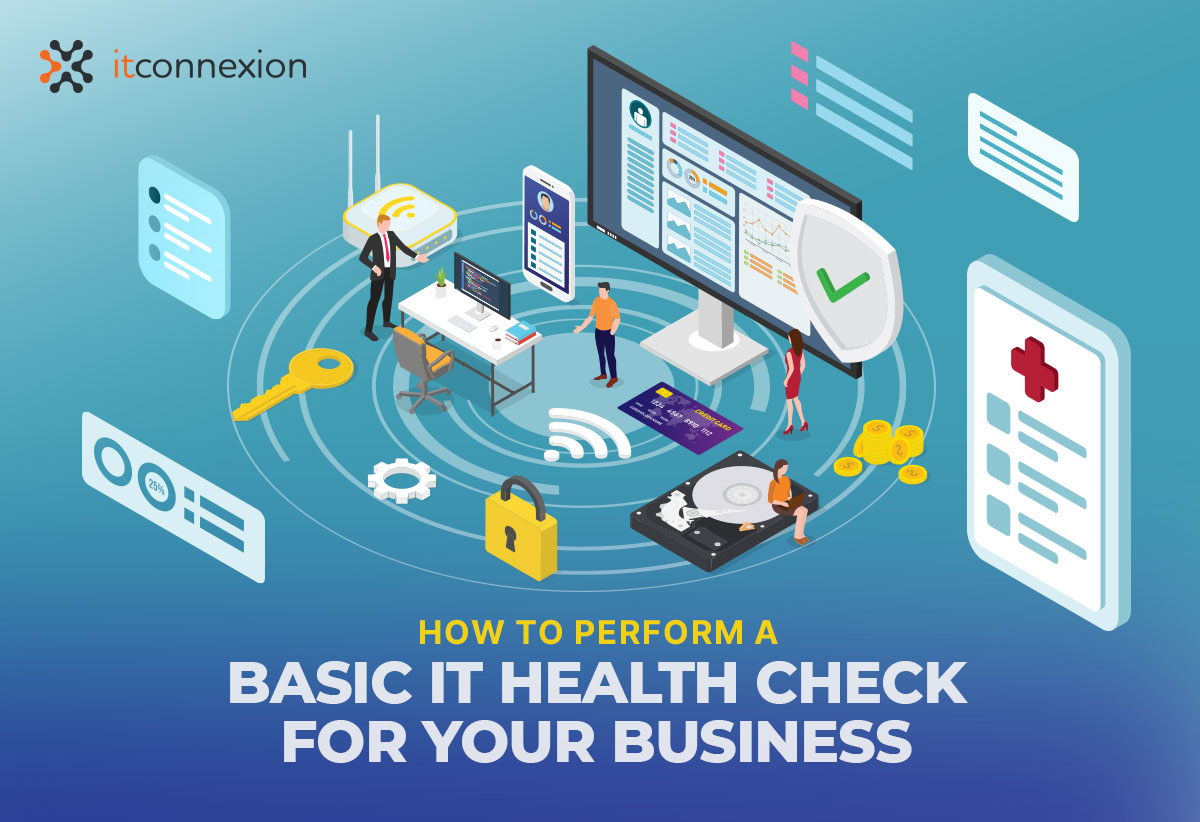Ensuring your business’s IT infrastructure is in top shape is crucial for maintaining productivity, security, and compliance. Conducting regular IT health checks can prevent costly breakdowns and improve overall efficiency. Here’s a step-by-step guide to performing a basic IT health check for your business.
Why IT Health Checks Matter
Regular IT health checks are essential for several reasons:
- Prevent Costly Breakdowns: Identifying potential issues early can save your business from unexpected downtime and expensive repairs.
- Improve Security and Productivity: Keeping systems up-to-date ensures protection against cyber threats and enhances workflow efficiency.
- Stay Compliant with Regulations: Many industries have regulatory requirements that businesses must meet to avoid legal and financial consequences.
- Prevent Costly Breakdowns: Identifying potential issues early can save your business from unexpected downtime and expensive repairs.
- Improve Security and Productivity: Keeping systems up-to-date ensures protection against cyber threats and enhances workflow efficiency.
- Stay Compliant with Regulations: Many industries have regulatory requirements that businesses must meet to avoid legal and financial consequences.
Your hardware forms the backbone of your IT infrastructure, and keeping it in optimal condition is essential.
- Inspect Devices for Physical Damage: Regularly check for signs of wear and tear or outdated technology that may impact performance.
- Replace Hardware Every 3–5 Years: Upgrading to newer models ensures compatibility with the latest software and security updates.
- Test Printers, Servers, and Network Devices: Make sure all hardware components are functioning correctly to avoid unexpected failures.
Your hardware forms the backbone of your IT infrastructure, and keeping it in optimal condition is essential.
- Inspect Devices for Physical Damage: Regularly check for signs of wear and tear or outdated technology that may impact performance.
- Replace Hardware Every 3–5 Years: Upgrading to newer models ensures compatibility with the latest software and security updates.
- Test Printers, Servers, and Network Devices: Make sure all hardware components are functioning correctly to avoid unexpected failures.
Keeping your software up-to-date is vital for security and performance.
- Update Operating Systems and Applications: Regular updates help patch security vulnerabilities and improve functionality.
- Automate Updates for Consistency: Enable automatic updates to ensure no critical patches are missed.
- Check for Unsupported or Legacy Software: Remove or upgrade outdated software to prevent security risks.
Keeping your software up-to-date is vital for security and performance.
- Update Operating Systems and Applications: Regular updates help patch security vulnerabilities and improve functionality.
- Automate Updates for Consistency: Enable automatic updates to ensure no critical patches are missed.
- Check for Unsupported or Legacy Software: Remove or upgrade outdated software to prevent security risks.
Data loss can be catastrophic, so regular backup testing is essential.
- Ensure Critical Data is Backed Up Regularly: Use automated solutions to back up important files frequently.
- Test Restoring Files: Periodically restore data to verify that your backups are working correctly.
- Use Both Onsite and Cloud Backups: A hybrid approach provides redundancy and quick recovery options.
Data loss can be catastrophic, so regular backup testing is essential.
- Ensure Critical Data is Backed Up Regularly: Use automated solutions to back up important files frequently.
- Test Restoring Files: Periodically restore data to verify that your backups are working correctly.
- Use Both Onsite and Cloud Backups: A hybrid approach provides redundancy and quick recovery options.
Network security is a top priority to safeguard sensitive business information.
- Ensure Firewalls and Antivirus Are Active: Regularly update and monitoryour security systems to prevent cyber threats.
- Scan for Vulnerabilities: Conduct regular scans to detect and fix potential security gaps.
- Enable Multi-Factor Authentication (MFA): Adding an extra layer of security helps protect against unauthorised access.
Network security is a top priority to safeguard sensitive business information.
- Ensure Firewalls and Antivirus Are Active: Regularly update and monitor your security systems to prevent cyber threats.
- Scan for Vulnerabilities: Conduct regular scans to detect and fix potential security gaps.
- Enable Multi-Factor Authentication (MFA): Adding an extra layer of security helps protect against unauthorised access.
Controlling who has access to your systems is crucial for security and compliance.
- Remove Access for Former Employees: Immediately revoke credentials to prevent unauthorised use.
- Verify Permissions for Current Staff: Ensure employees only have access to the data they need.
- Audit Access Rights Regularly: Regular access audits help identify and correct any inconsistencies.
IT Health Check Summary
A thorough IT health check should cover the following areas:
- Hardware inspection
- Software updates
- Backup testing
- Network security
- User access review
Need Help with IT Health Checks?
If you need expert assistance in conducting an IT health check for your business, ITConnexion is here to help.
As Melbourne’s leading IT support provider, ITConnexion offers proactive technological solutions to keep your business running smoothly. Reach out to us to learn more about how we can help safeguard your IT infrastructure.











